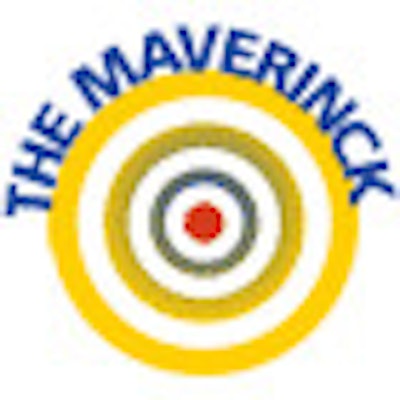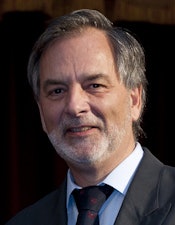
At the recent 14th Biennial Conference on Contrast-Enhanced Biomedical Imaging in Valencia, Spain, there was a round table discussion on molecular imaging. Here, I summarize my line of reasoning -- polemic as it might be.
"Molecular" is a very fashionable adjective. Nowadays you find molecular anthropology, molecular bartending and mixology, molecular biology, molecular sorting -- of garbage, that is. Thus, molecular medicine and molecular imaging are not alone. They fit nicely with molecular ecology, molecular urology, molecular histology, and molecular pathology -- and, they all are at the forefront of science.
Many of these novel disciplines are -- more or less -- well-defined, for instance:
"Molecular gastronomy" is a subdiscipline of food science that seeks to investigate, explain, and make practical use of the physical and chemical transformations of ingredients that occur while cooking, as well as the social, artistic, and technical components of culinary and gastronomic phenomena in general.1
 Dr. Peter Rinck, PhD, is a professor of diagnostic imaging and the president of the Council of the Round Table Foundation (TRTF) and European Magnetic Resonance Forum (EMRF).
Dr. Peter Rinck, PhD, is a professor of diagnostic imaging and the president of the Council of the Round Table Foundation (TRTF) and European Magnetic Resonance Forum (EMRF).
A joint summit of the RSNA and the U.S. Society of Nuclear Medicine (SNM) some years ago defined molecular imaging as "techniques that directly or indirectly monitor and record the spatio-temporal distribution of molecular or cellular processes for biochemical, biological, diagnostic, or therapeutic applications." Then, SNM changed its name into SNMMI adding "Molecular Imaging," and created an even longer, all-embracing definition at the same time.2,3
This definition sounds similar to that of molecular gastronomy, but if one reads it with the brain switched on, "molecular imaging" might not be molecular imaging at all but cellular imaging -- and it's always 4D, three in space, one in time. Some authors describe it as in vivo examination of processes,4 some include in vitro. For others it's an ex vivo technology, for instance, the application of molecular imaging using mass spectrometry in molecular histology: chacun à son goût -- everybody according to his or her own taste.
The authors of this and similar definitions seem to have realized from the beginning that the term "molecular imaging" walked on crutches. As the American Board of Nuclear Medicine states: "[E]xactly what constitutes molecular imaging can be confusing. For example, measurement of myocardial blood flow with radioactive tracers such as Tc-99m sestamibi or tetrofosmin would not be a molecular imaging technique because measurement of blood flow is not a molecular or cellular process."5 Nor is the measurement of the ejection fraction of the heart. Nor is contrast-enhanced x-ray and MR angiography.
Some people believe "molecular imaging" means imaging with molecular spatial resolution or mapping the distribution and activity of molecules in living tissues. These are misguided thoughts too.
In reality, "molecular" is used as a metaphor, a symbol of something else, perhaps an allegory symbolizing the ideas and concepts of great and deep and cutting-edge research. However, it doesn't mean "molecular."
Under the molecular umbrella, representatives of different scientific and commercial fields meet and misunderstand each other; the never clearly defined boundaries between science, research, medicine, politics, and commerce have become completely blurred.
And thus, molecular imaging has become the battlefield of a turf war. Everybody wants to be a molecular imaging warrior. There is no fight for the contents, rather for the flag with the big "MI." Aimed at radiologists, Dr. Alexander Margulis wrote a short note in Radiology in 2012, "Molecular imaging -- love it or lose it."4 I suggest: Lose it.
The story of the Tower of Babel told in the book of Genesis of the Bible is a beautiful description of what happened with "molecular imaging," "personalized imaging," and similar terms:
The whole earth was of one language. ... And they said one to another: Let us build us a city and a tower, whose top may reach unto heaven ... and the Lord said: "Behold, the people is one, and they have all one language; and this they begin to do: and now nothing will be restrained from them, which they have imagined to do. Let us go down, and there confound their language, that they may not understand one another's speech."
The issue is not the lack of ability and practical capacity to perform acts that may reach unto heaven; it is the inability to communicate in an understandable and correct language about it.
The conclusion of the round table discussion was that there are two uses of the term "molecular imaging," one among scientists and one for politicians and bureaucrats. As for the scientists: Why not return to "contrast-enhanced biomedical imaging?" If you want, you can add "targeted" for good measure. It is a clean and well-defined term; people know what you are talking about, it's idiot-proof.
As for the distributors of research funds -- "molecular imaging" opens the door to the treasures: to them it sounds good and scientific. Or as one well-known participant pointed out: "Molecular imaging is a kind of dead body which is revived when needed, like the dead grandfather is revived to get the pension money."
References
- Mandakas G. Molecular gastronomy. http://www.innovacuisine.com/about-molecular-gastronomy.html.
- Thakur ML, Lentle BC, SNM, RSNA. Joint SNM/RSNA Molecular Imaging Summit Statement. J Nucl Med. 2005;46(9):11N-13N, 42N.
- Mankoff DA. A definition of molecular imaging. J Nucl Med. 2007;48(6):18N, 21N.
- Margulis A. Molecular imaging -- love it or lose it. Radiology. 2012;264(1):5.
- ABNM. What is molecular imaging? http://www.abnm.org/index.cfm?PageID=5054&RPID=5041.
Dr. Peter Rinck, PhD, is a professor of diagnostic imaging and the president of the Council of the Round Table Foundation (TRTF) and European Magnetic Resonance Forum (EMRF).
The comments and observations expressed herein do not necessarily reflect the opinions of AuntMinnieEurope.com, nor should they be construed as an endorsement or admonishment of any particular vendor, analyst, industry consultant, or consulting group.




















